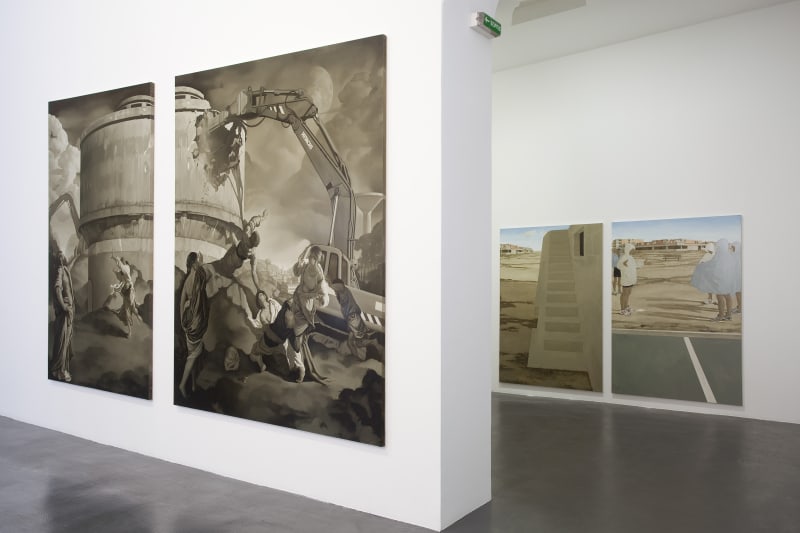Galerie Nathalie Obadia is delighted to present the second solo show by Guillaume Bresson in its Parisian space, two years after the first outing by this artist considered one of the most promising members of the new generation.
A theatrical gallery of figures watches the seemingly wanton destruction of an unlikely looking water tower ; a group meets at daybreak to prepare some pointless operation ; urban and vegetal no-man's-lands await the climax of an action that will never come… These paintings by Guillaume Bresson at Galerie Nathalie Obadia combine formal harmony and narrative quirkiness, making the artist a worthy heir of the literary and cinematographic avant-gardes. He redeploys the narrative experiments of the Nouveau Roman and the dramaturgical innovations of the theatre of the absurd in a pictorial space inherited from the Italian Renaissance and French classicism.
Following on from Bresson's emblematic paintings showing urban non-places and peripheries (parking lots, housing projects), this exhibition sees the artist broaden his creative processes and sources, emphasising friction between the representations and space-time. Unlike the "disposable" images produced by the media for mass consumption, anachronism is used here to link the image with the radical definition given by Georges Didi-Huberman in his authoritative essay, Devant le temps : "a montage of different time frames, a symptom rending the normal flow of things."
While the photo-realist finish of parts of the paintings reveals the long preparatory process involving photographs and computer imaging (amateur models sitting for the artist, gathering images on the Internet, the choice of props for their signifying qualities, 3D modelling of the scenes created), other parts of the canvas shatter the photographic illusion: a conspicuous brushstroke on a tree stump abruptly breaks the mimetic representation: the painting shows itself to be deceptive, leaving the beholder with the magnificent gaping hole of abstract, unsignifying paint matter.
The exhibition is accompanied by a catalogue published in partnership with Éditions Dilecta and art critic Stéphanie Katz (48 pages).

